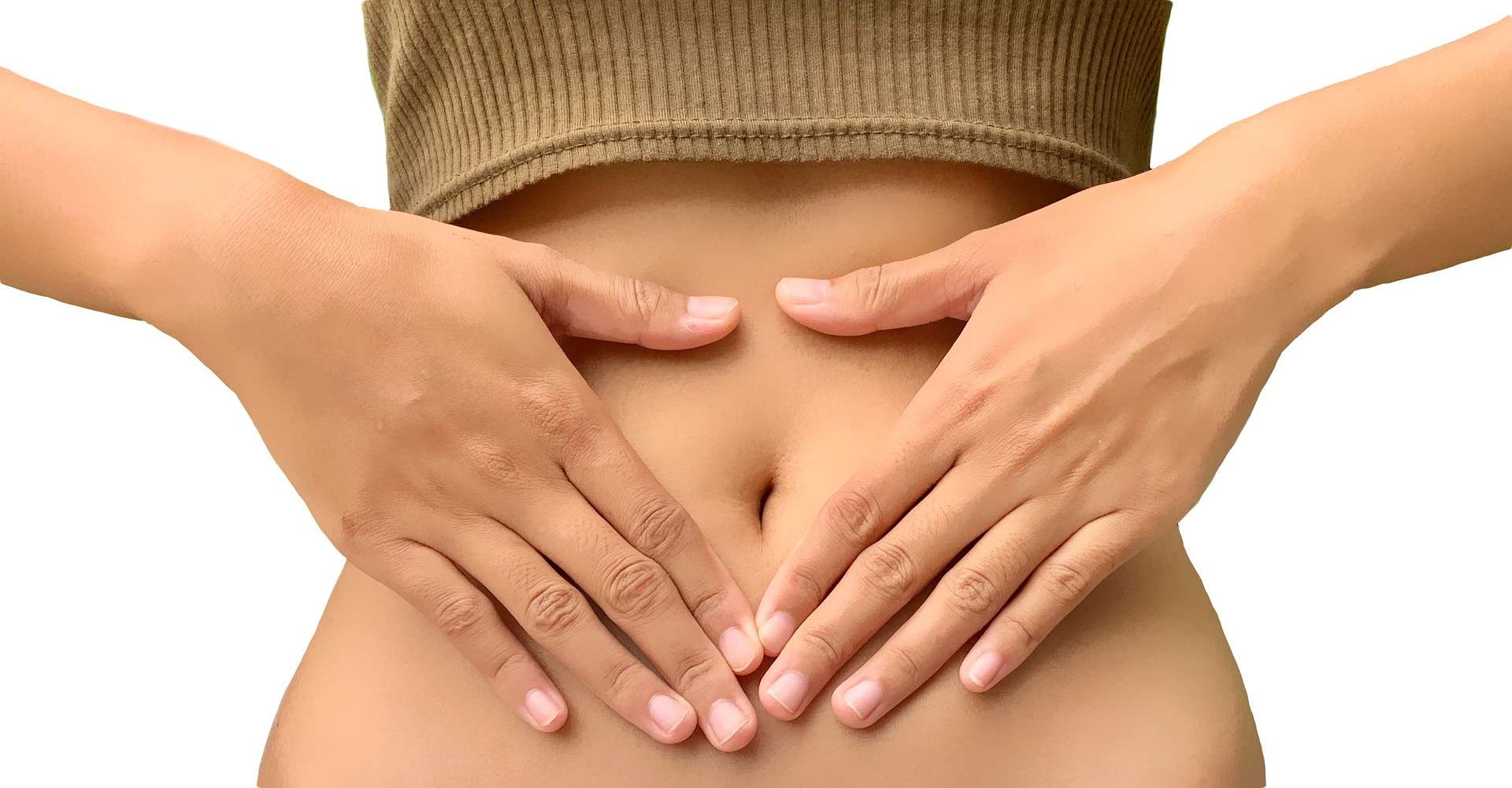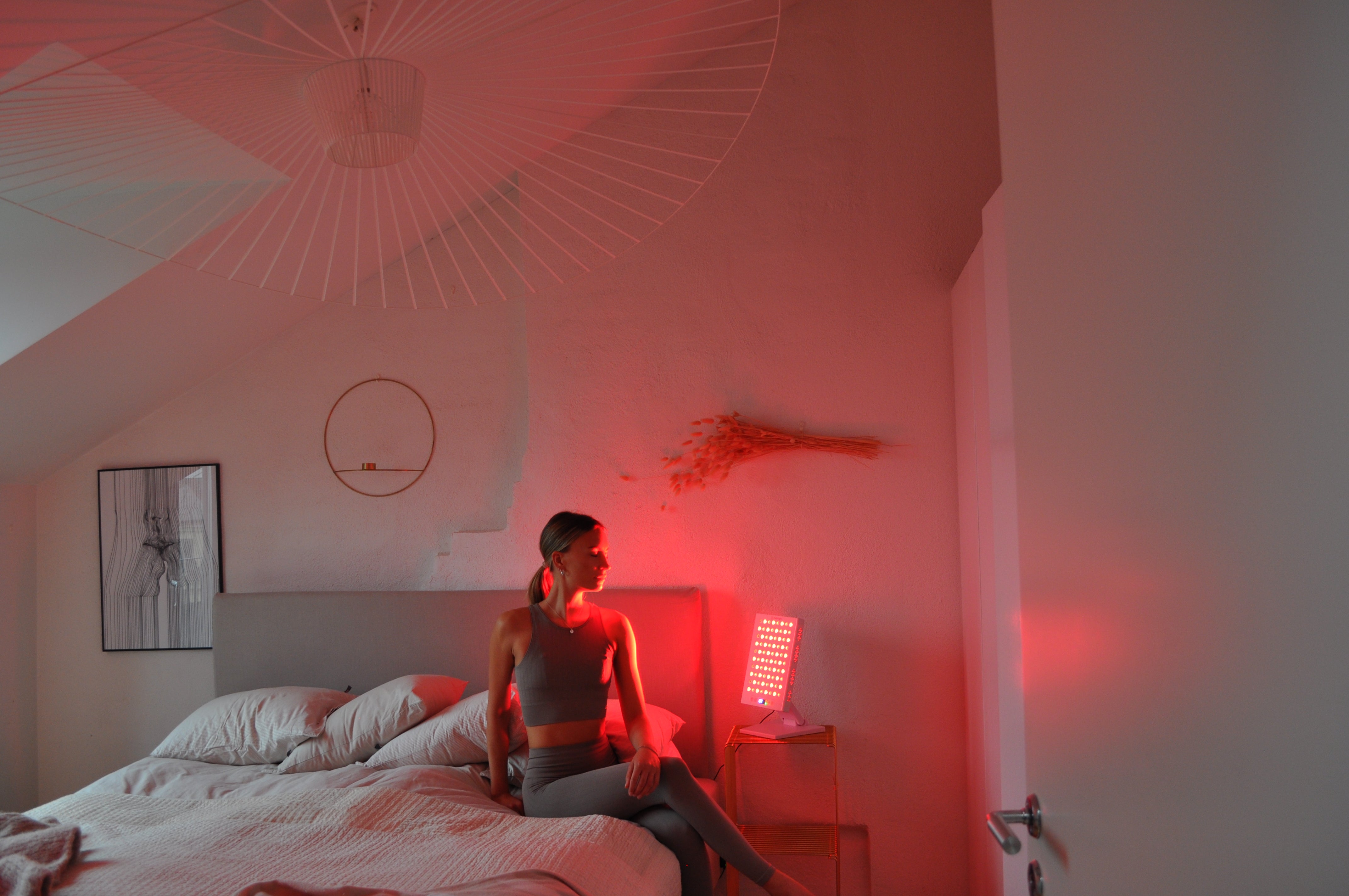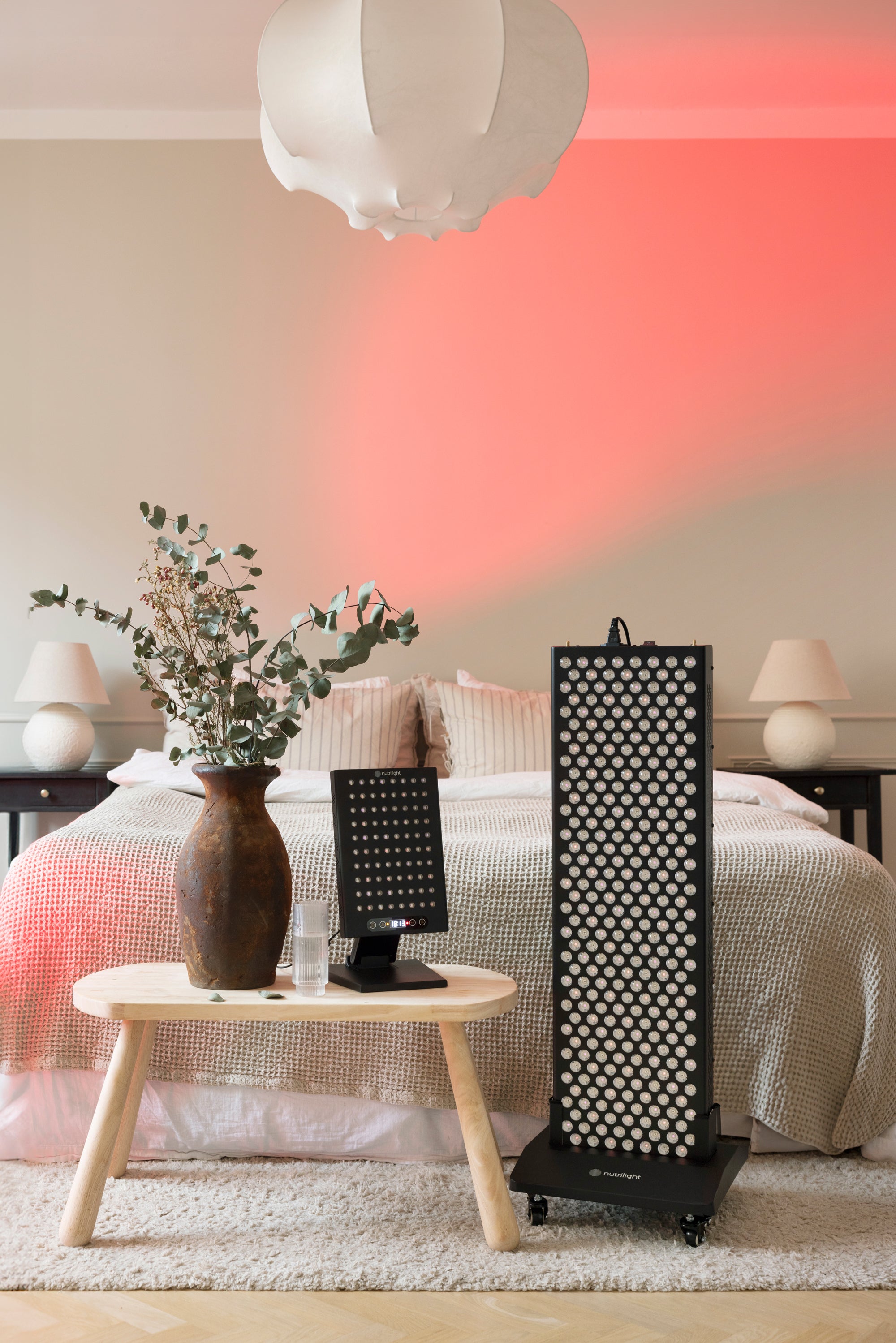Many people today suffer from poor intestinal health with an imbalance between "good" and "bad" bacteria, which leads to inflammation and impaired intestinal function. This means that the stomach does not work as it should and can affect nutrient absorption in a negative way, and the quality of life is also impaired by constipation or IBS (Irritable Bowel Syndrome). The latter is a common problem which means that the bowel is overreactive and the number of daily visits to the toilet becomes more than desired. In addition, we know that the beneficial intestinal bacteria produce benefits for us. It is about folic acid, antioxidants and short fatty acids such as butyric acid and propionic acid. We don't want to be without these as they improve health in a convincing way. There is much evidence that red light therapy (RLT) can actually improve gut flora, but the research is still young. How could that be possible? We know today that red light penetrates human tissue by several centimeters, but that it can hardly reach the gastrointestinal tract. Near infrared light can reach up to 15 cm into soft tissues such as the abdomen, but only a few percent of the light reaches that far. Maybe that's enough? Perhaps the pulsed light, which reaches a little deeper, could be even more effective? Possibly it is not the light itself that affects the intestinal flora at all, but all the health effects that are achieved in other tissues, e.g. surrounding organs and muscles. The intestine communicates with the rest of the body, so we know that it is possible to influence it in other ways, for example with minor inflammations. In any case, it is clear that the ecosystem known as the intestinal flora is affected in a positive direction and here we will explore it a little deeper.
Shall we have a chat?
Just as I mentioned, the intestinal flora communicates with the rest of the body, and to a very large extent the brain. The vagus nerve that connects the brain to the gastrointestinal tract is like a highway of signals that keeps these two parts of the body functionally intertwined even though they are several decimeters apart. RLT has been successfully used to reduce the symptoms of neurodegenerative diseases such as Alzheimer's and Parkinson's, and researchers believe that the improved intestinal flora may account for part of the effect. In the same way, a well-functioning brain will help the gastrointestinal tract, and it is no coincidence that many people react to stress with the stomach in particular. Vomiting from nervousness or having to go to the toilet before a performance in front of thousands of people are well-known mechanisms. Even if you don't react so strongly, we all know what "gut feeling" feels like and that it can guide us right through difficult decisions and actions. The intestinal flora is thus important for the health of the entire body and in a study on the connection to Alzheimer's disease, a clear improvement could be seen when treated with RLT (1). After 12 weeks of treatment, the intestinal flora was so altered that a clear change could be seen between the two types of bacteria known as firmicutes and bacteroides respectively. When doing an intestinal flora analysis with an intestinal flora test, a measurement of the ratio between these two groups is always included, and if it is shifted in the wrong direction, it is linked to an increased risk of type 2 diabetes, obesity, inflammatory diseases and much more, including Alzheimer's disease. Red light therapy thus produced a measurable positive effect on the quotient. In another study conducted on animals, strong effects were shown and the researchers concluded that "Intestinal flora-oriented red light therapy is a new opportunity to treat Alzheimer's in a non-invasive way, which gives new hope to sufferers" (2).
What can you expect?
If you already have perfect gut flora, it won't happen much because you're already enjoying its consequences. However, you will get other positive effects from RLT, so the technique is still good for you. If you, like so many others, have a slightly disturbed one, the noticeable effects are only weeks away. Changing an intestinal flora does not happen overnight, but still surprisingly quickly as the bacteria have a fairly short life cycle and can also divide relatively quickly. If the good bacteria start to multiply and take up more space, it automatically leads to less space for the less favorable ones. There is only room for so many bacteria and gradually the shift will happen if you take your RLT seriously and do regular treatments. One study showed that three treatments of the abdomen a week for 11 weeks produced major changes (3). Diversity increased, meaning a greater number of bacterial strains, which is generally linked to better health. In individuals who eat a lot of ultra-processed food with low fiber content and no probiotic bacteria, it can be as low as around 200 different strains. Natural people and those who actively eat fiber-rich foods without additives and refined ingredients such as white sugar, pure starch and seed oils can have over 2000 different strains. In addition, the amount of particularly healthy bacterial strains, which could be called the "superheroes of the intestinal flora", increased. Among them are Akkermansia, Faecalibacterium and Roseburia. At the same time, it could be seen that the amount of pathogenic bacteria dropped, so red light therapy should be seen as a proven effective way to improve the intestinal flora.
Photobiomics
There are plenty of new words in health. When we have just learned words like probiotics, prebiotics, postbiotics and metabolomics, "photobiomics" appears (4). I don't really know what word we should use in Swedish as it is not an established concept, but let's call it "photobiomics" for now. Perhaps it is this text that the Language Council will refer to regarding that word if it is included in the new word list that is published annually? It's about how light generally affects the intestinal flora and even the beloved sun does a good job. Considering how many people get too little sunlight, RLT is a valuable tool to keep the intestinal flora in balance. Research also shows that the intestinal flora has its own built-in circadian rhythm, and the light that comes from outside is very important in controlling it. It simply takes light both in the eyes and on the body to really tell your body what time of day it is. A big challenge in the dark part of the year, and perhaps a reason why many feel so tired and lethargic in winter? When you have the chance, you should therefore drink your morning coffee in the sun shirtless or in a bikini top to really shake your gut bacteria to life. Now it's time to get to work! If you don't have the opportunity to do that, you should start the day with a session of RLT. It will make a difference.
- Bicknell, Brian et al. "Microbiome Changes in Humans with Parkinson's Disease after Photobiomodulation Therapy: A Retrospective Study." Journal of personalized medicine vol. 12.1 49. 5 Jan. 2022, doi:10.3390/jpm12010049
- Chen, Qianqian et al. "Gut flora-targeted photobiomodulation therapy improves senile dementia in an Aß-induced Alzheimer's disease animal model." Journal of photochemistry and photobiology. B, Biology vol. 216 (2021): 112152. doi:10.1016/j.jphotobiol.2021.112152
- Brian Bicknell 1, E-Liisa Laakso 2 3, Ann Liebert 4 5, Hosen Kiat 6 7. Modifying the Microbiome as a Potential Mechanism of Photobiomodulation: A Case Report. Photobiomodule Photomed Laser Surg. 2022 Feb;40(2):88-97. doi: 10.1089/photob.2021.0057. Epub 2021 Dec 28.
- Ann Liebert 1 2, Brian Bicknell 3, Daniel M Johnstone 4, Luke C Gordon 4, Hosen Kiat 5 6, Michael R Hamblin 7 8 9. “Photobiomics”: Can Light, Including Photobiomodulation, Alter the Microbiome? Photobiomodule Photomed Laser Surg. 2019 Nov;37(11):681-693. doi: 10.1089/photob.2019.4628. Epub 2019 Oct 9.
Author: Fredrik Paulún






Share:
Red light therapy and stem cells
Red light therapy and weight loss